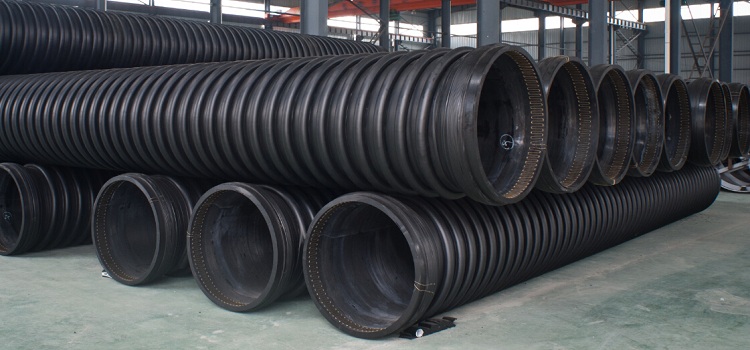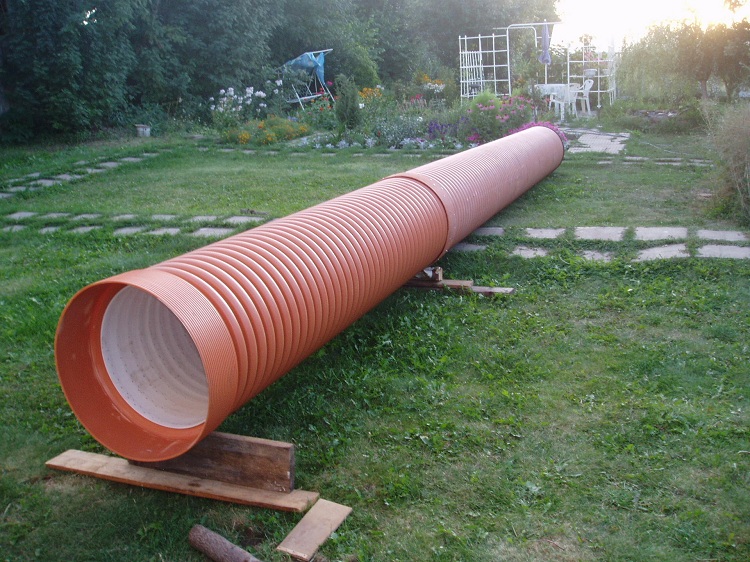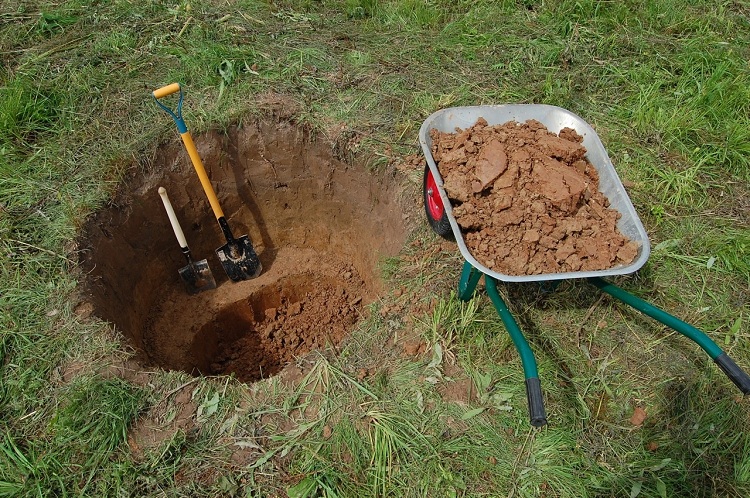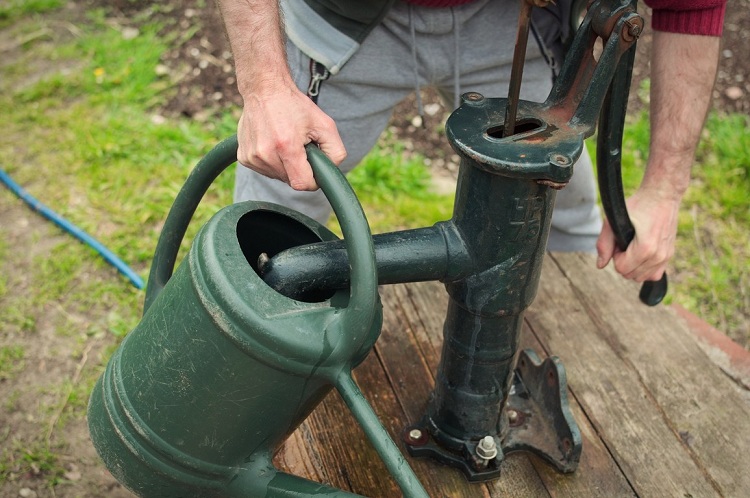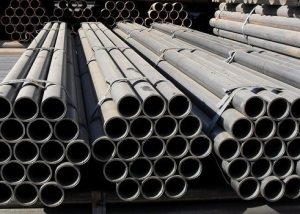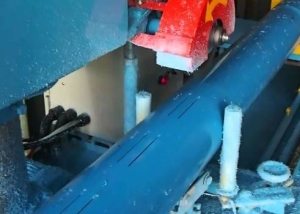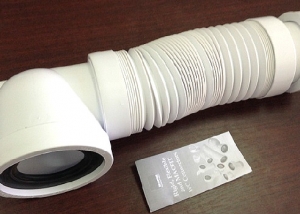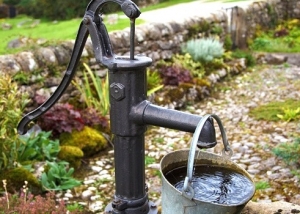Having decided to purchase a country house, you first need to find out whether electricity is connected to it and whether there is water on the household territory. And if the first problem is solved today, the second may become an obstacle to the purchase of this particular site. After all, without water it is only a patch of land, to talk about people living on which is devoid of any meaning. The way out of this situation is to extract water by digging a well. And they will help him arrange plastic pipes.
Content
Advantages and disadvantages
Wells from polymer pipe products are inherent in many advantages, which led to the fact that the owners of suburban areas began to give preference to water sources created not from reinforced concrete rings, but equipped with plastic. The advantages of such structures include:
- the well made of polymer pipe is a seamless structure with a maximum level of tightness. But the density of the connecting seams of reinforced concrete rings is lost with time under the influence of the soil;
- moderate cost of materials;
- a plastic pipe for a well has a small weight, which greatly facilitates the construction of a water source;
- not susceptible to decay and corrosion. This property determines the absence of dangerous contamination of drinking water;
- minimum thermal conductivity. Due to this characteristic, the probability of freezing water in the cold season is close to zero;
- the presence of stiffening ribs gives the walls of the plastic pipe additional strength;
- on the plastic walls of the well, the reproduction and vital activity of microorganisms is difficult;
- an extensive selection of sizes and shapes of polymer pipe products;
- ease of installation and maintenance;
- long service life.
Plastic wells do not have serious drawbacks that can outweigh the existing advantages. The same factors that are listed below can most likely be interpreted as features of the use of the design, but by no means as significant disadvantages.
- to prevent deterioration in the quality of drinking water due to atmospheric precipitation and mechanical impurities entering the well, its neck must be covered with a plastic cover.
- it is important to subject plastic wells to periodic maintenance - to clean the bottom, to carry out preventive maintenance of the filter and pump (if any).
Plastic well construction
The main problem of all sources of drinking water is their pollution by surface waters. But currently, means of protection against this phenomenon have been developed. One of them is to install a plastic pipe in the well instead of traditional well concrete rings. It should be seamless so that the water conduit does not leak into the shaft, and the presence of a layer of geotextiles will prevent sanding of the source.But here one nuance is of great importance - to ensure a sufficient flow rate of a well, it is necessary to get to the aquifer closest to the surface as accurately as possible.
Good to know! In fact, a well created using a plastic seamless pipe is a drainage tank that accumulates groundwater.
The creation of such a hydraulic structure includes the following steps:
- purchase of plastic double-layer pipes. Their diameter should be 400 millimeters. Only such products can be installed in soils;
- determination on the site of the place where the underground key hits with maximum force. To do this, call a specialist hydrogeologist. However, you can use a method based on the use of a branch of a vine that has the shape of a slingshot. Even in the 21st century, many owners of country houses use this method, which came to us from deep antiquity, to save money;
- digging openly under the source;
- having penetrated to a two-meter depth, begin to give the hole a round shape until it reaches the aquifer;
- after the key is clogged in the mine, a seamless plastic pipe for the well is prepared.
- lower the pipe into the well. Check that it reaches the bottom of the shaft;
- pour sand into the space between the pipe and the walls of the hole.
Pipe preparation includes the following steps:
- in cavities of fins to a height of 500 millimeters, drill numerous holes with a drill with a diameter of 7 millimeters;
- wrap the opening of the hole and pipe with two layers of geotextile;
- fasten the well filter with wire in a plastic sheath. It will prevent the passage of sand and, at the same time, pass water well;
- do not forget to insulate the pipe segment protruding 1 meter above the soil surface with foam;
- To start swinging the well, lower the submersible pump into it. To improve the quality of the water after swinging, load a layer of quartz sand and schungite into the pipe lumen.
Abyssinian well construction
The term “Abyssinian well” or “Abyssinian well” means a thin channel in the ground, which is performed by piercing the soil to a depth of not more than 10 meters. Inserted into it plastic pipe products with a diameter of not more than 1.5 inches. Marble chips fall asleep at the bottom of the well,
Of course, the density of the plastic does not allow to pierce the soil to the aquifer, but then he will be able to fulfill the role assigned to him later. To create a hole of the required length, you can use a garden drill, equipped with collapsible bars. This will reach the aquifer.
Cut the pipe into segments of 1-2 meters and stack them on top of each other as you move deeper into the hole. In this case, it is necessary to achieve maximum reliability of the connection, otherwise the design may be damaged. To facilitate the passage of the pipe through the hole in the ground, install a filter needle at its end.
Important! Among other things, this element will purify water from various mechanical particles and prevent siltation of the source.
When liquid appears in the well, the deepening process can be stopped and flushing can begin. If this procedure is carried out qualitatively, it remains only to wait no more than a day until the water is cleaned on its own and becomes usable.
The advantages of the Abyssinian well made of plastic pipes include:
- long service life;
- high quality water. The presence of a self-priming pump on top and the small diameter of the well prevent chemical contaminants, dust and microorganisms from entering the water;
- low cost creation procedures.
Other use cases
Reanimation of the reinforced concrete well. Using polymeric materials, you can not only equip a new well, but also breathe a second life into the old concrete. If there is a source on the site with water quality unsatisfactory for its owner, the simplest solution to this problem is to install a plastic pipe inside the well. For this, polymer pipe products are used, the diameter of which is 10-20 percent less than the cross section of reinforced concrete rings. Cement mortar is poured into the resulting free space. Plastic prevents the penetration of soil contaminants that occur due to the destruction of the reinforced concrete columns, and also prevents plaque that settles on the walls of reinforced concrete rings from entering the water.
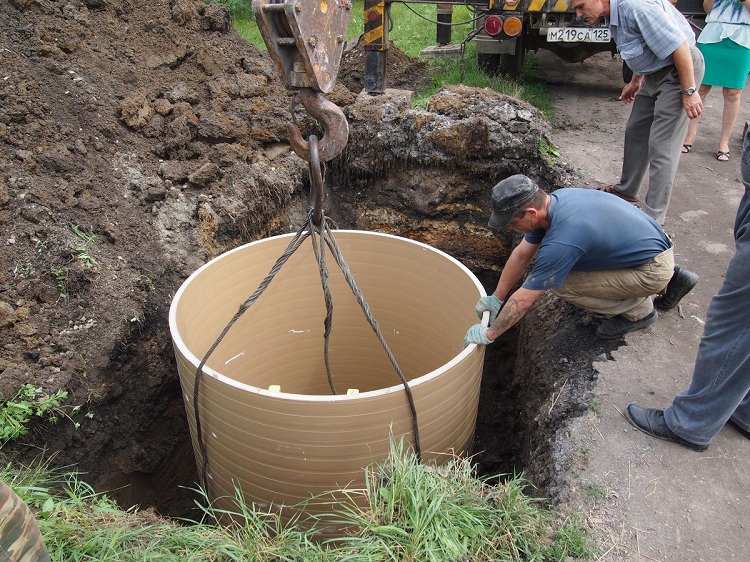
Plastic does not emit harmful substances into the water, so the concrete and metal pipes of old wells are replaced with polymer
Plastic sewer wells. Polymeric pipe products are also used in the design of domestic waste water disposal systems. This is due to the requirements of SNiPs, according to which each sewage must be provided with special wells. Their number is defined in regulatory documents. They allow you to maintain the system in good condition and timely service it.
Sewer wells are of the following types:
- rotary. They are installed in places where the flow of transported fluid changes direction;
- overflow. They allow you to monitor the operation and maintain the drainage system in places where the diameters of pipelines change;
- viewing points. Designed for servicing rectilinear sewer sections, the length of which exceeds 12 meters.
When installing plastic wells of any of the above types, you need to understand that if their bottom is below the groundwater aquifer, the structure may float.
Advice! This phenomenon can be prevented by installing a concrete anchor or by thoroughly composing bulk soil.
Types of plastic pipes for wells and boreholes
Modern industry produces such pipes from the following materials:
- low pressure polyethylene;
- polypropylene;
- polyvinyl chloride;
- unplasticized polyvinyl chloride (NPVC).
Plastic pipe for a well or a well happens:
1. A triangular profile with thread of various lengths - short and long. The dimensions of the first type of pipe are as follows:
- wall thickness 6 ≤ SArt. ≤ 15 mm;
- diameter 114 ≤ D ≤ 508 mm.
A coupling of a certain size is used to connect these pipes. The thread itself has the shape of a cone.
The meaning of the above parameters for pipes with long threads is as follows:
- wall thickness previous: 6 ≤ SArt. ≤ 15 mm
- diameter 114 ≤ D ≤ 245 mm.
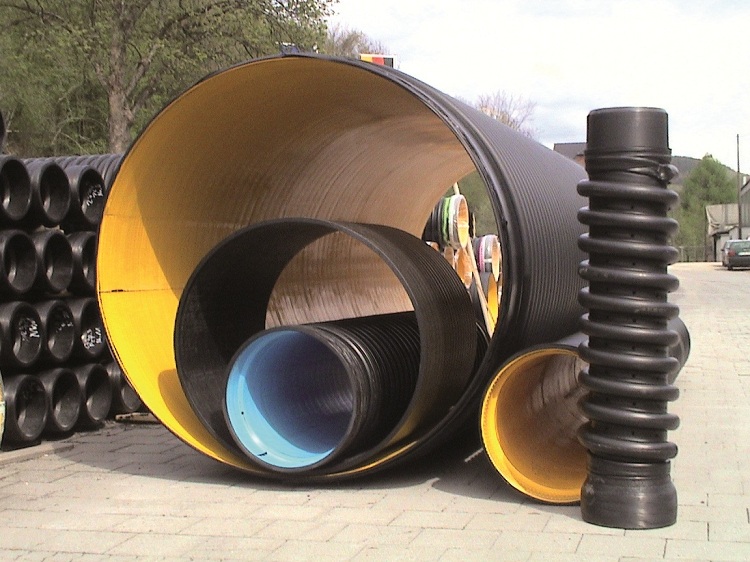
The diameter and wall thickness of the pipe required for the well depend on the size of the hole in the well and the type of soil in which it is located
The thread on them is cut or rolled on special equipment, and the end face has a conical shape:
2. Trapezoidal profile with tapered thread. Such a plastic pipe for a well and a well has the following dimensions:
- wall thickness: 0.6 ≤ SArt. ≤ 1.5 mm
- diameter 114 ≤ D ≤ 340 mm.
3. Pipe with connections characterized by a high level of tightness. Such products are recommended for use with extremely humid soil.
Comparative characteristics of plastic products
Having made a choice in the construction of a well or a well in favor of plastic pipe products, it must be taken into account that specific properties are inherent in various polymers. In particular:
- the density of pipes from HDPE is 0.94 / 0.96, and the products from non-PVC are 1.4 g / cm³;
- permissible design voltage: for HDPE pipes, this indicator is 50/63 MPa, for NPVH twice as much - 100/125 MPa;
- the elastic modulus for HDPE is 900, NPVH - 3000;
- polymer tensile yield strength: PND 20/30 MPa, NPVH - 50/56.
The following technological advantages are inherent in the NPVH pipe for a well:
- Due to their higher yield strength, they are more suitable for threaded connections. NPVH products with a diameter of 125 millimeters when installed at a depth of 30 meters seven-fold safety factor. Such a pipe is able to withstand a load of up to 5 tons.
- NPVH products are characterized by the best hydraulic properties, since their rigidity is as close as possible to the value of this indicator of metal pipe products.
The recommended scope of HDPE pipes is the arrangement of wells up to 3 meters deep. For the well, NPVC products are better suited. When buying, pay attention not only to the diameter, but also to the manufacturing material specified in the passport. There were cases when PND products were issued for non-PVC pipes.
Prefabricated Plastic Wells
Talk about the use of polymer products to create wells will be incomplete without mentioning the plastic rings. They are made of polypropylene or polyethylene, moreover, secondary raw materials are not used for this. These materials are characterized by a high degree of inertness, therefore they are resistant to aggressive environments.
Based on modern technology, plastic rings are made that do not lose their properties in the temperature range - 70 ≤ T + 50ºС. Therefore, you do not have to worry about the quality of water obtained from such a source. In addition, plastic rings are very convenient to use. After all, they weigh a little, therefore, it is not necessary to use heavy equipment, as required by concrete products of similar products.
Good to know! The lack of hygroscopicity does not require waterproofing after installation, which saves a considerable amount of money.
Prefabricated structures are connected into a single unit using thread. This simplifies installation, and less time is spent on it. To increase the tightness, before connecting the elements of the future well, coat the threads with silicone sealant.
Water from the constructed well can be brought directly into the house, and not be carried in buckets by housing. This is implemented using:
- deep pump. Such a unit lowers on a cable to the bottom of the well, and a hose is connected to it, which is discharged directly into the house. Modern pumps of this type can be equipped with a remote control system. This option allows you to enable / disable them while in the living room.
- centrifugal pump. It is installed in the basement, and water is drawn through a large hose supplied from the well.
And remember - when working with the soil, you must follow safety precautions. Therefore, be sure to use helmets, gloves and protective clothing.
